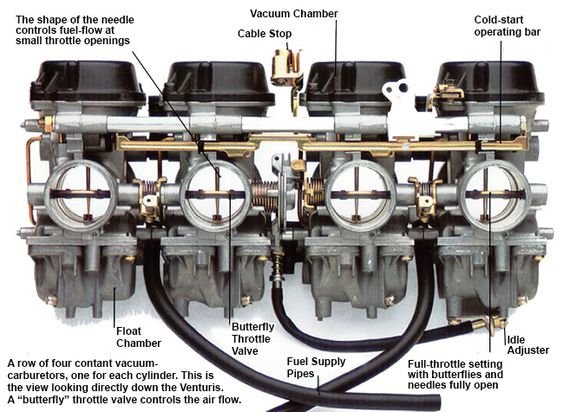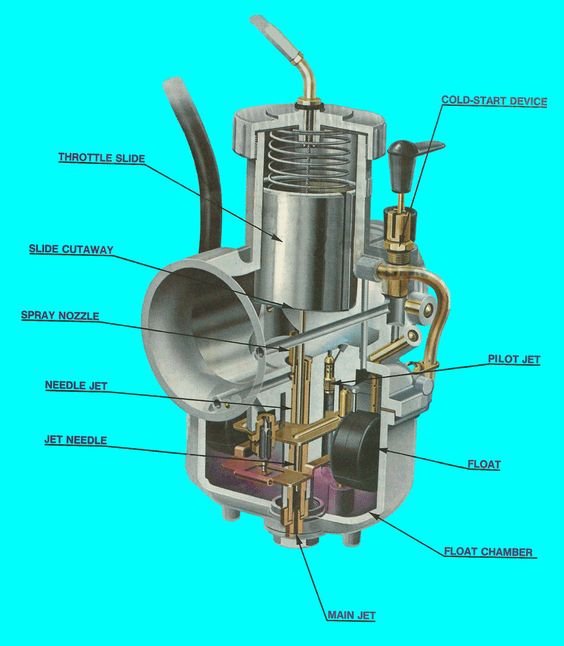-
Posts
3,600 -
Joined
-
Last visited
Content Type
Profiles
Forums
Gallery
Events
Everything posted by yvesvidal
-

Bentley 4.5 litre (altered version) by kpnuts 1/12 Airfix
yvesvidal replied to kpnuts's topic in Non-ship/categorised builds
Fantastic work KPNuts. What a departure from the original model that you got back from your friend. I have to say, I like your latest version a hundred times more that the original kit. Is the 1976 Porsche your next model? Yves -
The Masterpiece continues.... It is simply amazing of perfection, precision and beauty. Yves
-
Kevin, this is my favorite yawl, of all times. I will be following with passion, your upcoming build log. Yves
- 337 replies
-
- finished
- mountfleet models
-
(and 1 more)
Tagged with:
-
Superb model Kevin. Extremely realistic and a wonderful work on the lighting. Now, what is the next model? Yves
- 337 replies
-
- finished
- mountfleet models
-
(and 1 more)
Tagged with:
-
I realized that I have not posted any progress for a while. Did not make much progress, but here you go: The finished painting of the various parts. Not an easy task and rather time consuming and expensive. I am using these Inspire paints which are offering a close rendering of the original Candy Gold color seen on the early CB750. These paints are from British origins (if I am not mistaken) but are available in the USA. They are expensive ($14 a bottle) and are designed for airbrush exclusively. They also require alcohol or some paint thinner to clean all your gears. First, you must apply a coat of Silver Fine with an airbrush. Once, you are satisfied with the silver coating, you start applying the Candy Fools gold which is almost transparent. Then you have to build up layers: at first it becomes yellowish to turn reddish after 6 or 7 coats. Take your time and be patient. My results are far from being perfect and truly, I should have practiced on spare parts, before doing the motorcycles. After letting the whole set dry for a day or two, you need to apply the clearcoat. Here again, I ordered 2K clearcoat from the Inspire company. At $20 a can (can only be used once or twice), it quickly becomes an expensive model. The clearcoat is highly dangerous (similar to MaxSpray 2k) and comes in a special can with two tanks. By perforating the internal bottom of the can with a pin, you are mixing the two components of the clearcoat. This stuff is identical to what is being sprayed on real automobiles and you need a mask and goggles to apply it. The clearcoat in its liquid form is not really toxic, but once pulverized, the molecules of clearcoat have a strong affinity for moisture and will try their best to reach your eyes and the inside of your lungs. So, Mask with dual cartridges and fully enclose goggles. The result is quite nice and renders the metallic paint of the Honda of early 70's. The clearcoat can be polished to a perfect finish with the polish and buffing products that you use for your car. The can only be used once or twice and its shelf life (once punctured and mixed) can be extended to a couple of days, by keeping it in the fridge with your favorite beers. The first thing was to assemble the front forks: And their headlight: The engines have also got some attention: Carburetors and air box: Notice on the Tamiya kit (picture above) how I have tried to align the engine fins. The mis-alignment is something you see in a lot of models assembled from the Tamiya kit. It is worth spending some time gluing them closely and then filing each fin so that it aligns perfectly. On the Tamiya kit, you can see how I screwed up the top and bottom of the airbox, by not laying exactly the same amount of coats. Damn it!! Finally, the frames, still trying to build in parallel as much as possible: Yves
-

Epoxy glue
yvesvidal replied to Zooker's topic in Building, Framing, Planking and plating a ships hull and deck
My favorite is Araldite (In Europe). It comes in two flavors: slow curing (24 hours) and fast curing (5 minutes). The slow curing is the only one to consider. I have tried various brands in the USA, but never found one that came close to Araldite. Yves -

Bentley 4.5 litre (altered version) by kpnuts 1/12 Airfix
yvesvidal replied to kpnuts's topic in Non-ship/categorised builds
Superb KPNuts. What a resurrection... I am happy that you could get your model back and turn it into this very unique piece of art. Yves -
I realized I had not posted any updates, recently. Reasons were multiple: - Waiting for parts and materials to finish the submersible. - Started the construction of two motorcycles Honda CB750 at the same time (what was I thinking...?) - Started restoring another pinball machine.... Bally Playboy 1978 Anyway, a major milestone was achieved recently with the gluing of the conning tower on the deck: It is starting to look like a Type-VIIc now: Next will be the rigging, that I have been preparing, while waiting for some elastic thread. Yves
-
There are multiple beautiful Build logs in the https://modelshipworld.com/forum/10-build-logs-for-ship-model-kits/ With a little search you will find them. Yves
-
Working on the carburetor ramp, on the Tamiya kit: very nice set, realistically molded although quite complex to assemble. Parts need to be filed to allow for the glue to grip: And finally, some thin bands of soldering wire to simulate the clamp rings. Their respective position will be refined, once I glued the carburetor ramp to the engine. Here is a picture depicting the typical 4 carburetors of a 4 in-line motorcycle engine (not for a CB750). TAMIYA has correctly recreated on their kit, the cold-start operating lever. The other picture shows the main components of a traditional motorcycle carburetor. I suspect that the majority of the readers of MSW, have at least once taken apart a carburetor and perhaps try to put it back together.... 😉 As a kid, I remember filing and polishing the intake manifold of my 50 CC Derbi to increase its performance. I was then able to reach 75 KM/H, instead of the 45 KM/H authorized by law. Another aspect of the French law on Mopeds was that the diameter of the carburetor funnel could not go above 14 mm. All the young people were modifying their DellOrto carburetors with a 19 mm retrofit kit, from Italy. Highly illegal, but so exciting..... Anything was good to get a few more KM/H of top speed.... Yves
-
Beautiful 2nd planking. You are right, that hull can remain as it is without painting. Yves
- 45 replies
-
- j-class yacht
- amati
-
(and 2 more)
Tagged with:
-
Really nice Kevin, very realistic and beautiful. Yves
- 337 replies
-
- finished
- mountfleet models
-
(and 1 more)
Tagged with:
-
Not much progress on the bikes, but I finished the seats. The seat of the CB750 is quite unique and very comfortable, for an early 70's bike: None of the manufacturers provided the metal decoration that goes all around the vinyl seats. I added these with a thick piece of solder, glued with Cyano-Acrylate. The MPC seat, simpler in its representation, was enhanced with two little screws of 1.8 mm to simulate the anchors of the passenger handle. The Tamiya seat provides a real handle for the passenger, made of some kind of rubbery plastic. The Tamiya seat has a shell underneath and will open on the frame, whereas the MPC is just an hollow shell, glued to the frame. Yves
-
I fully agree with your assessment of the deck situation. I understand why Chris would provide a "perfect" deck in the kit, as most builders will want their model to look perfect. However, for a fishing boat, the reality is somewhat different. Yves
- 195 replies
-
- lady eleanor
- vanguard models
-
(and 1 more)
Tagged with:
About us
Modelshipworld - Advancing Ship Modeling through Research
SSL Secured
Your security is important for us so this Website is SSL-Secured
NRG Mailing Address
Nautical Research Guild
237 South Lincoln Street
Westmont IL, 60559-1917
Model Ship World ® and the MSW logo are Registered Trademarks, and belong to the Nautical Research Guild (United States Patent and Trademark Office: No. 6,929,264 & No. 6,929,274, registered Dec. 20, 2022)
Helpful Links
About the NRG
If you enjoy building ship models that are historically accurate as well as beautiful, then The Nautical Research Guild (NRG) is just right for you.
The Guild is a non-profit educational organization whose mission is to “Advance Ship Modeling Through Research”. We provide support to our members in their efforts to raise the quality of their model ships.
The Nautical Research Guild has published our world-renowned quarterly magazine, The Nautical Research Journal, since 1955. The pages of the Journal are full of articles by accomplished ship modelers who show you how they create those exquisite details on their models, and by maritime historians who show you the correct details to build. The Journal is available in both print and digital editions. Go to the NRG web site (www.thenrg.org) to download a complimentary digital copy of the Journal. The NRG also publishes plan sets, books and compilations of back issues of the Journal and the former Ships in Scale and Model Ship Builder magazines.






.thumb.png.fad9a3ec2d94b650b96fcb1bd453787a.png)